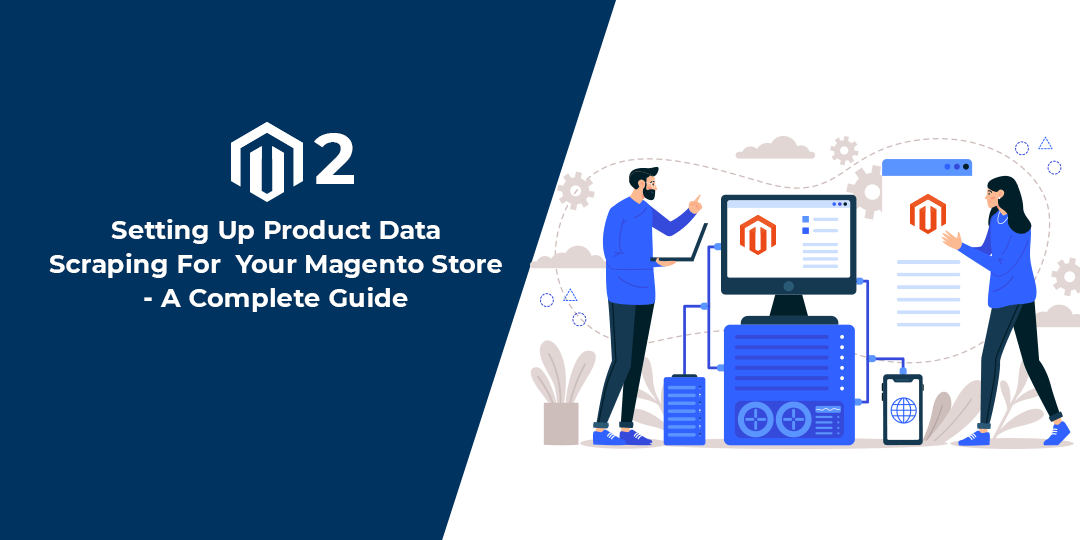
Image Source: Pexels
If you’re looking to take your online selling to the next level, it’s worth it to discover the power of web scraping to elevate your Magento store’s success.
With that in mind, here’s an overview of what product data scraping is, its benefits for eCommerce, preparatory steps to consider, a pragmatic step-by-step setup guide, important tips, and real-world application examples. So let’s dive into this game-changing tactic that can revolutionize your business operations today.
Understanding the Basics: What is Product Data Scraping?
Product data scraping involves using software tools to extract essential product information from ecommerce websites. These details may include prices, images, reviews and ratings. In essence, you’re essentially teaching a tool to “read” website content like a human would, but at lightning speed!
A key challenge for many first-timers is figuring out how to scrape websites without getting blocked by anti-bot measures. This guide will help you navigate these potential roadblocks effectively.
Benefits of Product Data Scraping for Your Magento Store
Implementing product data scraping can profoundly boost your ecommerce store’s competitive edge. It yields significant benefits:
- Market Research: Gathering competitors’ pricing and rating info helps guide dynamic pricing strategies.
- Inventory Management: Monitoring product availability ensures you’re stocked with in-demand items.
- Consumer Sentiment Analysis: Harvesting customer reviews contributes to understanding market trends and improving offerings.
By scrutinizing these harvested insights, you’ll be well-equipped to make key business decisions now and in the future.
Preparation Steps Before Setting Up Web Scraping
Before you begin your data scraping journey, certain foundational steps are crucial:
- Define Your Goals: Understand what product details you need and why.
- Choose the Right Tool: Research different scraping software according to your needs. Consider factors like ease of use and cost.
- Learn About Legal Concerns: Ensure you understand legal caveats in web data collection to avoid infringing on privacy laws or breaching terms of service.
Planning before diving into scraping helps prevent any surprising detours down the road, and ensures you can get started smoothly.
Step-by-step Guide to Set Up Your Own Magento Store Web Scraper
Diving into the data scraping process might seem complex but it’s manageable when broken down:
- Select your Scraping Tool: Based on your goals, choose software that aligns with your needs.
- Define Parameters: Specify what product details you wish to extract, be it price, images, reviews or ratings.
- Run a Test Scrape: On your chosen tool, run a pilot scrape on select pages before scaling up. This will help in troubleshooting potential issues early.
- Schedule Scrapes: Plan regular scans of targeted sites to keep abreast of changes in market trends and inventory.
Remember, consistency is vital when scraping data, so maintain regular checks for analyzing growth indicators.
Important Tips and Precautions When Implementing Data Scraping Techniques
When setting up web scraping for your Magento store, ensure to mind the following tips and precautions:
- Respect Website’s policies: Always check a site’s Robots.txt files before scraping. These files guide what sections of their site are off-limits to bots.
- Don’t Overload Servers: Aim not to disrupt the server of the website you’re scraping. Rapid-fire requests can lead to your IP getting blocked.
- Stay under Radar: Use proxies or captcha-solving services where necessary. They can aid access whilst making bot activity appear more human-like, minimizing blocks.
Staying mindful of these details means both beginners and experts can seamlessly collect requisite data without crossing ethical or legal lines.
Examples & Case Studies: Successful Applications of Data Scraping in Ecommerce
There are numerous success stories demonstrating the power of data scraping:
- Dynamic Pricing Models: Amazon uses web scraping to monitor competitors’ prices and adjust their own dynamically.
- Improved Products Catalog: Wayfair leverages scrapes to add new products regularly while ensuring existing ones reflect market trends.
- Enhanced Customer Experience: Zappos analyzes customer reviews from multiple platforms, tweaking their service for better customer satisfaction based on insights gleaned.
Each case shows how using scraped data appropriately can shape strategic decisions, streamline operations, and attract more customers.
Integrating Web Scraping with Your Magento Store
The beauty of Magento is its flexible integration potential. There are plugins for everything, including search optimization and security.
To incorporate web scraping techniques, you’d typically need a third-party extension designed to facilitate data extraction. These tools help seamlessly gather competitor prices, product attributes or customer sentiment directly into your Magento backend for analysis and utilization.
There are also full-blown web scraping APIs to harness, depending on your needs and your technical know-how, so research your options and start sucking up that data!
Wrapping Up
Now that you’re armed with the strategies and tools needed for successful product data scraping in Magento, it’s time to act.
Start harnessing the power of data today to supercharge your ecommerce store, and the benefits will quickly become apparent.





